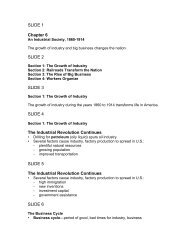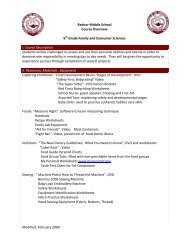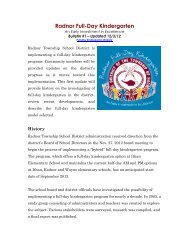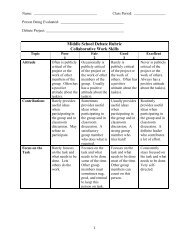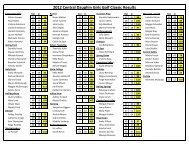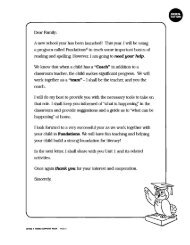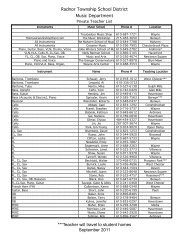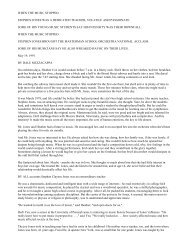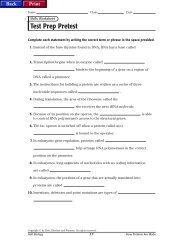Self-Esteem and Student Achievement
Self-Esteem and Student Achievement
Self-Esteem and Student Achievement
Create successful ePaper yourself
Turn your PDF publications into a flip-book with our unique Google optimized e-Paper software.
310 ROBERT H. STUPNISKY ET AL.modeling to test causal paths while statistically controlling for students’incoming ability (high school grades), gender, <strong>and</strong> age; (3) the use of establishedmulti-item scales for measuring self-esteem <strong>and</strong> perceived controlto create latent variables; <strong>and</strong> (4) utilizing objective measures of academicachievement (high school grades <strong>and</strong> college GPAs) obtained from institutionalrecords.2. Method2.1. PARTICIPANTSParticipants were 802 first-year students (498 females, 304 males; age 17–22)from a large, mid-western research-1 university who were enrolled in atwo-semester introductory psychology course. The students were recruitedat the start of the academic year <strong>and</strong> volunteered for the study to obtaincredits in their introductory psychology course. 12.2. MEASURES2.2.1. High School Grades<strong>Student</strong>s’ final average percentage in their core college entrance courses(Math, English, Chemistry, Physics) from their last year of high schoolwere obtained from institutional records at the end of the academic year(M = 77.63%, SD = 8.01, range = 56.00–99.00). High school performancewas included in the analyses to control for potential differences in students’aptitude when they entered college (Perry et al., 2001; Perry, Hladkyi et al.,2005; Ruthig, Haynes et al., 2007), which may affect self-esteem, perceivedcontrol, <strong>and</strong>/or GPA.2.2.2. DemographicsAge (M = 18.23, SD = 0.57) was included in the analysis because it positivelycorrelates with self-esteem: older students have higher self-esteemthan younger students (Twenge & Campbell, 2001; Woodard & Suddick,1992). Age has also been found to correlate with academic achievement, asolder students have more academic success (Clifton, Perry, Adams-Stubbs,& Roberts, 2004). Gender was included because female college studentstend to report lower self-esteem than male students (Demo & Parker,1988).2.2.3. <strong>Self</strong>-esteem<strong>Student</strong>s’ self-esteem was measured using the Rosenberg (1965) <strong>Self</strong>-esteemScale (RSES). The RSES is a well-established measure with high reliability<strong>and</strong> construct validity (Robins, Hendin, & Trzesniewki, 2001). Thescale contains five positively-worded items, such as “I feel that I have a



